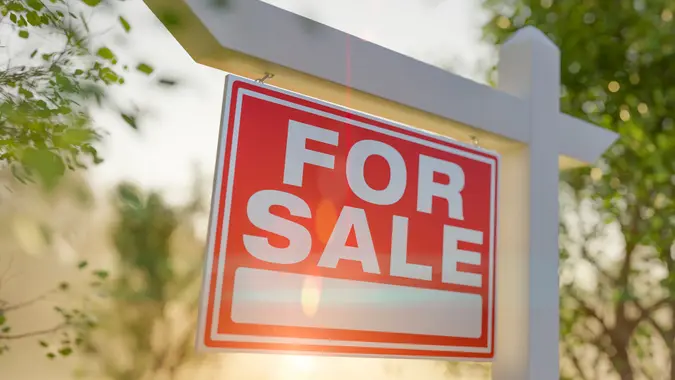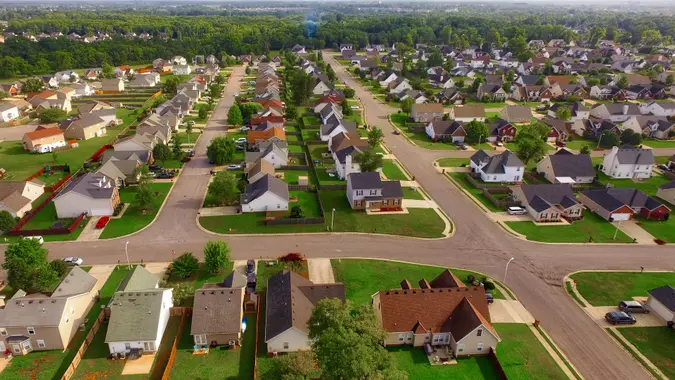Advertiser Disclosure
GOBankingRates works with many financial advertisers to showcase their products and services to our audiences. These brands compensate us to advertise their products in ads across our site. This compensation may impact how and where products appear on this site. We are not a comparison-tool and these offers do not represent all available deposit, investment, loan or credit products.
6 Strange Investments People Turned Into Homes
 Written by
Travis Woods
Written by
Travis Woods
 Edited by
Chris Cluff
Edited by
Chris Cluff

Commitment to Our Readers
GOBankingRates' editorial team is committed to bringing you unbiased reviews and information. We use data-driven methodologies to evaluate financial products and services - our reviews and ratings are not influenced by advertisers. You can read more about our editorial guidelines and our products and services review methodology.

20 YearsHelping You Live Richer

Reviewed by Experts

Trusted by Millions of Readers
America’s real estate industry has suffered a number of ups and downs in the 2020s, thanks to the COVID-19 pandemic, high interest rates, rising cost of living and high mortgage prices. Additionally, with the recent slew of tariffs coming from the White House, the costs of home construction are expected to increase, thereby raising the prices of new homes. If ever there was a perfect time to come up with creative solutions to homebuilding, it might be now.
As such, GOBankingRates has gathered some of the strangest homes in the world, in which architects, engineers and buyers invested in unusual buildings and purchases to refashion them into new homes, utilizing everything from airplanes to newspapers (yes, newspapers).
Boeing 727-200
Modern airplanes are incredibly strong and complex structures designed to survive highly pressurized environments and damaging weather and essentially are meant to take a beating from the elements and protect the people within. Thus, Bruce Campbell of Hillsboro, Oregon, felt like a retired Boeing 727-200 would make the perfect (and safest) home to invest in.
Paying $100,000 for it 1999, Campbell refurbished it with a shower, washing machine and other amenities, per USA Today.
He said it simply makes sense to use such an advanced piece of hardware as a home: “To me it’s wholly irrational to destroy the finest home-sized structures available on this planet and then turn around and build homes out of materials which are fundamentally little more than assemblies of sticks rendered with ancient and inferior design and fabrication methods.”
Century-Old Schoolhouse
Want to own a massive, multi-level beautiful brick home for less than $200,000? Consider buying an 111-year-old schoolhouse in Indiana, as Stacie and Sean Grissom did in 2021, per CNBC. Be prepared, though, for a lot of remodeling — it took the Grissoms three years to make the spacious schoolhouse into an incredibly cozy (and safe) home, one that costs them about $4,200 per year in property taxes.
1930s Dairy
In Barcelona, the architects Lluís Corbella and Marc Mazeres redesigned an entire dairy as a loft — adding a suspended walkway and glass walls to keep the structure spacious and roomy, while keeping the dairy’s original facades, roof and overall structure, per Weetas.
Newspapers
As a means to show how much useful material society discards daily, engineer Elis Stenman began building a house in 1922 out of something people throw away every day: newspapers. Around the home’s wooden frame, Stenman constructed the house out of rolled and varnished newspapers, finishing the home in 1924.
According to Listverse, the paper serves as excellent insulation, and the hardened varnish keeps the home safe and structurally sound.
Train Station
Looking for a two-bedroom, two-story home with a mezzanine, modern kitchen, three-car garage, vaulted ceiling and a veranda in New York? According to Love Property, as long as you’re fine with living inside a converted train station, you’re in luck. Constructed in the mid-20th century, the former train station is now a cozy, open-floor plan. Once a stop for the Black Diamond Express, it’s now a place you can hang your hat at the end of the day.
Century-Old Bank
The Waterville Bank opened in 1911 and served as a financial institution for 70 years, closing in 1981. It then served for a time as an art studio, before being converted into a 2,758-square-foot home. Very little has changed in well over 100 years — the building still has its tall commercial door frames and windows, as well as vaulted ceilings, per Love Property. Yet it also now comes with two bedrooms and a kitchen for modern living, making it a unique mix of old and new (and yes, the original vault is still included).
Editor’s note: Photos are for representational purposes only and do not reflect the exact structures mentioned in this piece.
Share This Article:




You May Also Like


4 Ways the Trump Administration Can Impact Your Real Estate Investments in the Next 3 Years
December 04, 2025
4 min Read


Retirees Should Avoid Renting in These 4 California Cities With the Most Competition
December 04, 2025
4 min Read



Ramsey Expert Calls Trump's 50-Year Mortgage a 'Horrible Idea' -- 3 Experts Weigh In
December 04, 2025
4 min Read





I'm a Real Estate Agent: 5 Housing Market Trends To Prepare for in 2026
November 25, 2025
4 min Read


3 Expensive Historic Estates for Sale That Look Straight Out of a Movie
November 26, 2025
4 min Read

ChatGPT Answers What Trump's 50-Year Mortgages Could Mean for Home Prices
November 26, 2025
4 min Read

Make your money work for you
Get the latest news on investing, money, and more with our free newsletter.
By subscribing, you agree to our Terms of Use and Privacy Policy. Unsubscribe at any time.


Thanks!
You're now subscribed to our newsletter.
Check your inbox for more details.



Sending you timely financial stories that you can bank on.
Sign up for our daily newsletter for the latest financial news and trending topics.
For our full Privacy Policy, click here.
Looks like you're using an adblocker
Please disable your adblocker to enjoy the optimal web experience and access the quality content you appreciate from GOBankingRates.
- AdBlock / uBlock / Brave
- Click the ad blocker extension icon to the right of the address bar
- Disable on this site
- Refresh the page
- Firefox / Edge / DuckDuckGo
- Click on the icon to the left of the address bar
- Disable Tracking Protection
- Refresh the page
- Ghostery
- Click the blue ghost icon to the right of the address bar
- Disable Ad-Blocking, Anti-Tracking, and Never-Consent
- Refresh the page


